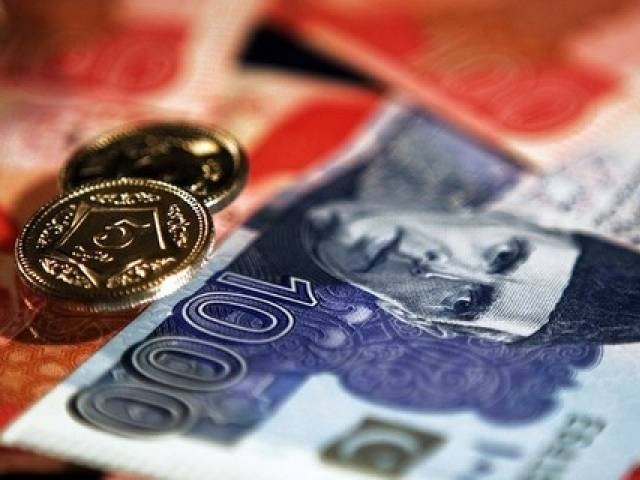When debt is not used to aid growth
From 2000-2015 stock of public debt has grown about sevenfold

From 2000-2015 stock of public debt has grown about sevenfold. PHOTO SOURCE: BLOOMBERG
This view also includes China Pakistan Economic Corridor (CPEC) project as part of debt accumulation.
Govt missed IMF external debt targets by $14 billion
The other view is that the level of public debt is sustainable and the often quoted rising number is out of context as it does not account for growth.
Public debt is raised to meet deficits in balance of payments, budgetary shortfalls and to finance development projects. Ultimately, public debt stock should not cause concern if a country’s economy is growing sufficiently to repay debt obligations — including the interest and the principal amount.

In fact, sometimes, debt is the only way to acquire infrastructure and capital. Pakistan built Tarbela and Mangla Dams largely from World Bank loans, which have played transformational role in agriculture and industrial development of the country.
Over 15 years spanning 2000-2015 the stock of public debt has grown by about seven times —from Rs3 trillion to over Rs22 trillion.
Are we growing fast enough? If we take a non-partisan view, and consider the growth in the size of our economy, we will realise that over the same time period spanning 2000-2015, we have hardly doubled the size of the formal economy, now standing at less than $300 billion. One conclusion is straight forward: we have not used the debt we accumulated to help us grow.
A two-time growth in GDP and a seven-time growth in public debt can only lead to this, we have borrowed irresponsibly.
It should be mentioned that during the present government period, the rate of public debt accumulation has actually slowed down, when compared with 2008-13. But overall, the situation has not improved.
Consequences of debt
As a consequence of disproportionate borrowing, debt overhang occurs which means that we have lesser resources available to spend on social sector, human development and economic development.
Is this level and growth of debt sustainable? The real question should not be framed in context of gross domestic product, but in the context of budgetary resources. As per government’s own definition, if more than 30% of tax revenue is spent on debt repayment, this becomes unsustainable.
Pakistan's debt pile soars to Rs22.5tr
Over the last few years, this indicator is largely missed, as we have used almost 40% of our revenue in debt repayments.
Will CPEC add to debt stock? This is a tricky question. A simplistic explanation is that since out of $46 billion (now $51 billion) package, only $11 billion is debt, and rest is in the private investment mode, it won’t add to the public debt substantially.
In fact, debt from China at 2% interest should not be worrisome at all. However, the power sector repayments will occur only in dollars. That could be a major challenge when seen in context of sovereign guarantees being provided to independent power producers.
According to some experts, as long as dollars have to be repaid through current account, it does not matter if they are considered public or private, and if they are debt or a liability.
Thus in worst scenario, a major portion of power sector repayments would be treated as public debt obligations.
Is external debt more dangerous? Commonly held view is that external debt often jeopardises a country’s independence, but here I would like to consider the position of federal government.
Historically, the external debt has taken almost 20 years to double arriving at the current stock of the disbursed $56 billion (the debt contracted is $73 billion). Whereas the domestic debt has taken only 6 years to double.
In fact, out of the Rs22 trillion stock of public debt, almost Rs13 trillion is domestic debt. Domestic debt is easy to acquire, as banks lend happily at risk-free rate. It is far more expensive and matures much more rapidly.
Out of total debt repayment we make every year, almost 90% is consumed by domestic lenders.
Let’s recap. In principle, we can always borrow, as long as we are doing it responsibly, something which is not exhibited by recent governments.
A two-pronged strategy is needed: on the one hand, the federal government must control its tendency to borrow heavily from the domestic sources. On the other hand, conscious efforts should be undertaken to unleash the wealth tapped within the country, by improving business climate.
The writer is founder and executive director of PRIME Institute, an independent economic policy think tank in Islamabad
Published in The Express Tribune, December 19th, 2016.
Like Business on Facebook, follow @TribuneBiz on Twitter to stay informed and join in the conversation.


















COMMENTS
Comments are moderated and generally will be posted if they are on-topic and not abusive.
For more information, please see our Comments FAQ